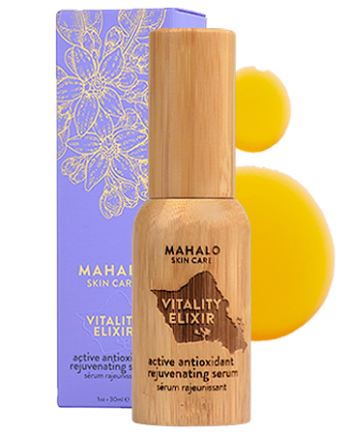Let’s talk Oh-MEGA fatty acids. Many of you know that the Omega fatty acids are an integral part of a healthy diet.
But, did you know that they are also a vital part of a healthy skincare? With all the buzz about this important and, at times, mega-complicated family, it is easy to get overwhelmed between what’s what. To understand what they are, let’s break them down.
The basics: the Omega categories.
The Omegas belong to two categories. The essential fatty acids and non-essential fatty acids. The difference is simple and is as follows:
• Essential Fatty Acids cannot be produced naturally by the human body, therefore it is “essential” that we get them from elsewhere
• Non-Essential Fatty Acids can and are produced naturally by our bodies, so getting them from elsewhere into our bodies is just an extra boost.
ESSENTIAL FATTY ACIDS:
Omega-3 (the Linolenic Acid) and Omega-6 (the Linoleic Acid)
The essential fatty acids – Omega-3 and Omega-6 – are crucial to skin function and appearance. They give rise to potent signaling molecules, called eicosanoids, which influence the inflammatory response in skin. The Omega3 and Omega-6 atenuates UV-induced photo damage, extrinsic signs of skin aging, symptoms associated with skin sensitivity, and inflammatory skin responses. The deficiency of the essential fatty acids significantly affects skin’s function and appearance, and is often characterized by increased transepidermal water loss which reflects the integrity of the barrier function of the skin.
The metabolism of the essential fatty acids is limited in the skin (they comprise less than 2% of naturally produced epidermal fatty acids); long-chain derivatives of them are therefore considered conditionally essential nutrients for skin. A topical supplementation is often a more efficient route of delivery to enrich the longevity of the epidermis, especially during deficiency (which often are characterized as acne, inflammation, dryness etc). People who are acne-prone tend to have a low percentage of linoleic acid, and a high percentage of oleic acid in their sebum (natural skin oil). It’s often suggested that the low levers on linoleic acid in skin is the leading cause of various acne.
You will find a strong presence of the essential fatty acids in all oil-based MAHALO Skin Care products, especially the Vitality Elixir facial serum and the new Rare Indigo balm. A few notable oils rich in essential fatty acids are as follows:
• hemp (63% Linoleic acid) (Rare Indigo)
• grapeseed (70% Linoleic acid) (Rare Indigo, Mahalo Balm)
• rosehip (44% Linoleic acid) (Mahalo Balm)
• camellia (Rare Indigo)
• chia (73% Linolenic and 23% Linoleic) (Vitality Elixir)
• kukui (Vitality Elixir, Vacation Glow, Rare Indigo, Mahalo Balm)
• black cumin (67% Linoleic) (Vitality Elixir)
• tamanu (Vitality Elixir, Vacation Glow, Mahalo Balm)
• carrot (Vitality Elixir, Rare Indigo, Mahalo Balm)
NON-ESSENTIAL FATTY ACIDS:
Omega-7 (the Palmitoleic Acid)
This Omega is one of the newest talked about acids, but is fast becoming the “007-strong” favorite. Thought it belongs to the “naturally produced” fatty acids, the skin is seriously gulping it up. It has showed effects in reducing the appearance of wrinkles, boosting collagen production, restoring plumpness and glow, helping the skin retain moisture, and protecting against free-radicals. The most known, and loved, Omega-7 oil is the Sea Buckthorn oil, which has a concentration of about 40%.
You will find the Omega-7 Palmitoleic acid in the following oils that are used in MAHALO Skin Care products:
• sea buckthorn (Vitality Elixir, Vacation Glow, Mahalo Balm)
• macadamia (Vacation Glow, Mahalo Balm)
Omega-9 (Oleic Acid)
The Oleic acid acts to restore normal skin barrier function, and often mimic skin’s natural sebum.
The Omega-9 is often talked of in the same breath as the Omega-3 and Omega-6 acids, but is in fact a necessary but “non-essential” fat because the body can manufacture a modest amount on its own. The important fact, which is not always known, is that an adequate presence of the essential fatty acids in the skin are is crucial in order for the natural production of the Omega-9 to occur. If the skin is depleted of the essential fatty acids, then the topical supplementation of Omega-9 is especially essential.
Oils high in Oleic Acid:
• olive (78%)
• sunflower ( 74%)
• avocado (Vacation Glow, Mahalo Balm)
• shea (50%)
• macadamia (Vacation Glow, Mahalo Balm)
In conclusion: topical application of Omega fatty acids have a number of hugely positive effects on the skin. The most important being, boosting the lipid content and the repair of the skin’s barrier function. This helps protect delicate skin, improves moisture levels, soothe skin conditions such as acne and eczema, helps the skin retain its own moisture which all leads to improved softness and elasticity.

.







